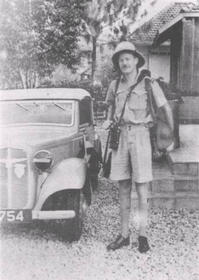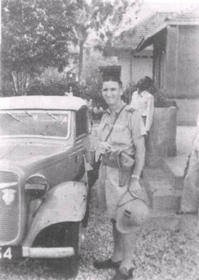


Recollections of Service in the Bureau and RAAF
Foreword
Recollections—Mascot and Rose Bay—the Early Years
Sojourn in the Far East 1942
References
Endnotes
Index
Search
Help
Contact us

Our course was continuous zig-zag and we were too fast to be in a convoy; well south of the Bight and thence across the Indian Ocean. We went ashore at Bangiwangi on 24 December in eastern Java for a route march to exercise the troops and ourselves. We arrived at Batavia (Tandjoeng Priok Harbour) a few days after Christmas. When we landed George Mackey contacted the appropriate authorities. We were given billets. Doug Forder and I were put up in a hotel which was very comfortable in the old Dutch colonial style. We all reported daily to movement control, and George was trying to get transport for us to Singapore. We visited the famous botanical gardens near Buitenzorg or Bandoeng on a forces' bus excursion; a couple of us sampled the Black Cat nightclub in Batavia; and George Mackey took us to the Observatory to meet the Director of the Dutch meteorological service there, Dr Boerama, for a liaison visit. There was a severe blackout imposed on the city.


Soon we got on a ship, on 4 January—MS Sieberg—a small Dutch vessel. Among the passengers were a party of seaman who were survivors from the sinking of HM Ships Prince of Wales and Repulse (this took place on 10 December 1941 off Kuantan in eastern Malayan waters. This was to the British side a tragic event and of great significance to the balance of naval power in the Far East).
We arrived in Singapore Roads on 6 January. We were taken to Sembawang aerodrome, quartered in the comfortable messes, and paraded before Group Captain J. P. J. McCauley RAAF, in command of this station, on which were based the RAAF and Dutch airforce.
In view of the rapidly changing situation and the fact that Malaya was already one third overrun by the Japanese, we were directed to join the RAF meteorological section at Sime Road, RAF Headquarters, at least for the time being. So for the next three weeks or so that is where we worked—virtually as supernumeraries—with Wing Commander Grimes and Squadron Leaders Lee and John—these three being in peace time members of the British Meteorological Office in Singapore and well-experienced in tropical meteorology. We had to get some local knowledge of tropical weather processes, as none of us had practised so near the equator and certainly not in the northern hemisphere with any consistency. Contact with these men was valuable to us and we had many learning sessions. Resources were primitive and the observations uncertain both as to networks and completeness, in view of the rapid progress of the Japanese as was to be expected.
People in Bright Sparcs - Forder, Douglas Highmoor (Doug); Hannay, Alexander Keith (Keith); Mackey, George William
 |
Bureau of Meteorology |  |
© Online Edition Australian Science and Technology Heritage Centre and Bureau of Meteorology 2001
Published by Australian Science and Technology Heritage Centre, using the Web Academic Resource Publisher
http://www.austehc.unimelb.edu.au/fam/0351.html